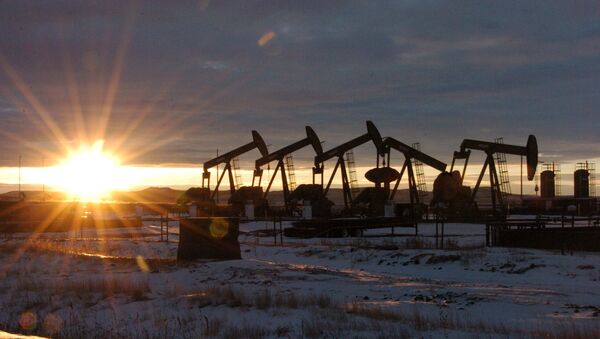“According to the consultancy Wood Mackenzie, about a third of oil production in the US states, not including Alaska and Hawaii, comes from companies that have borrowed against their oil and gas reserves and that face redeterminations of their borrowing base,” Bloomberg says.
According to survey conducted by the law firm Haynes and Boone, the forecasts predict a 39 percent decrease in the oil companies' borrowing ability, with 79 percent of borrowers expecting a decrease.
While this is relevant to small producers that can only borrow against their reserves, Bloomberg says, bigger ones will also be hurt by banks' and investors' cooler attitude toward the oil industry.
In the second quarter of 2015, 83 percent of US onshore oil producers' operating cash flow was used for servicing debt, according to the US Energy Information Administration — about twice the level of early 2012.
December 2016 futures contracts for Brent crude sell for $56 per barrel, about $6 higher than the current price. This makes hedging by selling contracts such as this one rather unattractive, though oil firms still do it to retain their borrowing ability. Wood Mackenzie estimates that the 26 biggest independent oil producers' cash flow from hedging will shrink to $2.2 billion next year from $9.1 billion in 2015.
OPEC expects US oil production to drop by 100,000 barrels per day after explosive growth in 2014 and a slight increase this year (recent losses haven't completely wiped out the strong growth in the first six months of 2015).
At current prices, demand is growing everywhere because cars, trucks and planes are cheaper to use, says the market report of the International Energy Agency.
However, Bloomberg says, the Saudis will cover the increase.
“This means another harrowing year for everyone, but especially for the US producers.”




